#medieval mystic
Text

"Oh, whatever the season, Oh, whatever the season, in all the wide world there is nothing that can give me joy but true Love. Oh My Love, for my faithfulness (for You are the only joy of my soul, (the only) desire of my heart) I have mercy on my need; see how I fight; hearken to the complaint of my heart.
Alas, no matter how much I cry and complain about my woes, Love does with me what pleases Her; I want to give Her praise and honor all my days. Oh my love, would you please take my loyalty into account! For it gives me courage to mention it, since Your (own) fragrance first attracted me to Your highest peaks.
Oh my love, you who have never deceived me: since you showed me in my youth what I longed for, (since you can do it), be my salvation. Oh yes, Minne, you who control everything, give me the love that pleases me most; for You are the mother of all virtue, Lady and queen.
Oh noble Love, pure one, oh see how I hold out and be a relief for my bitter pain. O I wander too much in perilous fate, I abhor all other things, give me, Love, the whole (sweet) mystery of Your noble nature.
Oh, if I make progress or suffer damage, everything will happen, My Love, according to Your counsel: Your strokes help me greatly (on the road to) the Minne. Oh, if I travel through the depths (of misery), if I climb until I am hungry or satisfied, the top (of joy), if I could fully satisfy You, Love, and die because of it. Amen, Amen."
-Hadewijch of Brabant.
#books#history#literature#religion#theology#mysticism#esotericism#religious#christian#christianity#female mystic#medieval#medieval mystic#dutch#dutch writer#dutch literature#nederlands#medieval literature#christian mysticism
10 notes
·
View notes
Text
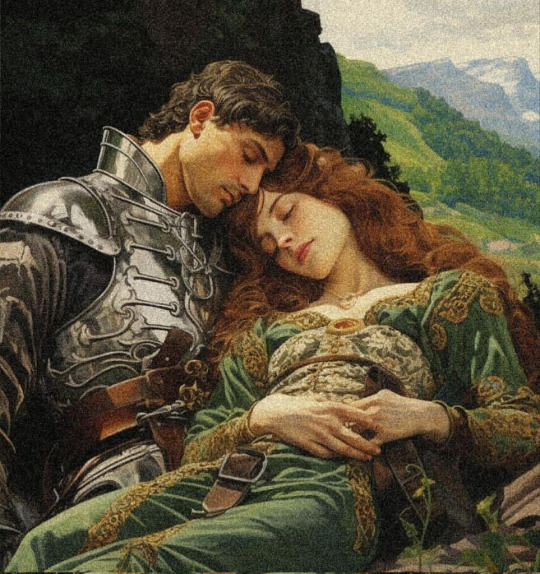
By Mystical Antiquity
#art#artist#illustration#medieval#armor#knight#damsel#princess#fantasy#high fantasy#mine#Mystical Antiquity
7K notes
·
View notes
Text

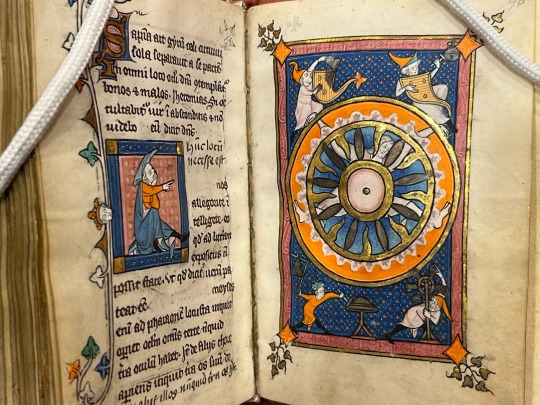

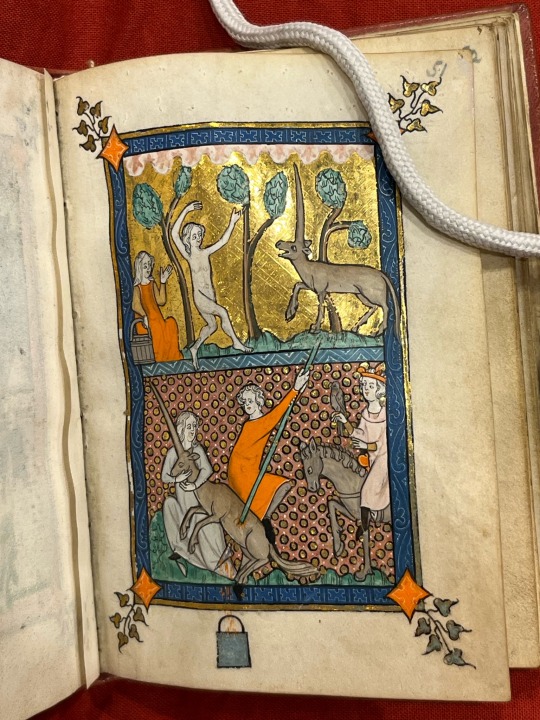



Amazing Christian mystical art from a medieval manuscript!
@cryptotheism Get a load of the colors on this one! I don’t know which one this is because I didn’t call it up myself (and I think this is one of the ones you needed special permission for, anyway), but it’s incredible.
2K notes
·
View notes
Photo

#ecthxs#sidewound#digital collage#stigmata#aesthetics#christianity#mysticism#dark art#inspired by#and including elements of#medieval art#judas could never
2K notes
·
View notes
Text
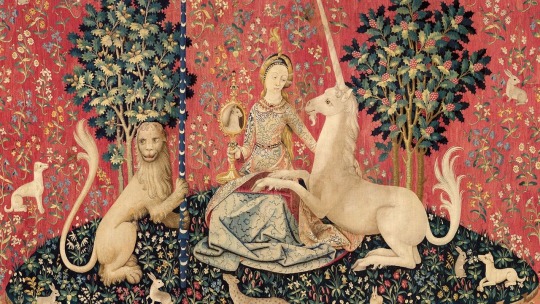

Lady and the Unicorn
Created in the late 15th century, is one of the most iconic works of art from the Middle Ages. This masterpiece features a series of six tapestries that depict a noblewoman and a unicorn in various scenes, surrounded by a lush background of plants and animals. The tapestries are believed to have been created for the wealthy Le Viste family in France and are now on display at the Musée national du Moyen Âge in Paris.
#art history#virgo#diary#lgbtq+#unicorn#art#mystical#medieval#tapestry#artoftheday#queer art history#unicorn art
959 notes
·
View notes
Text

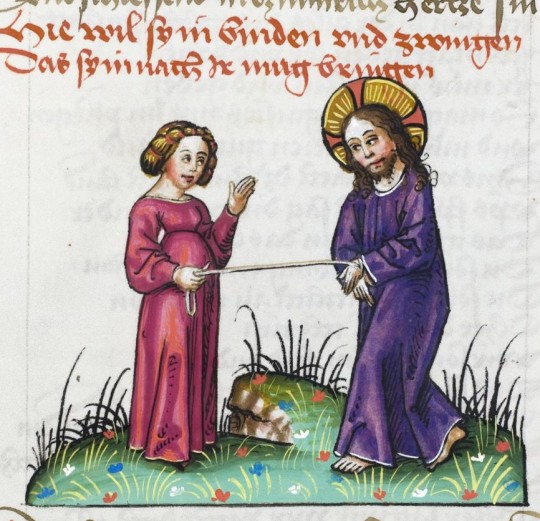

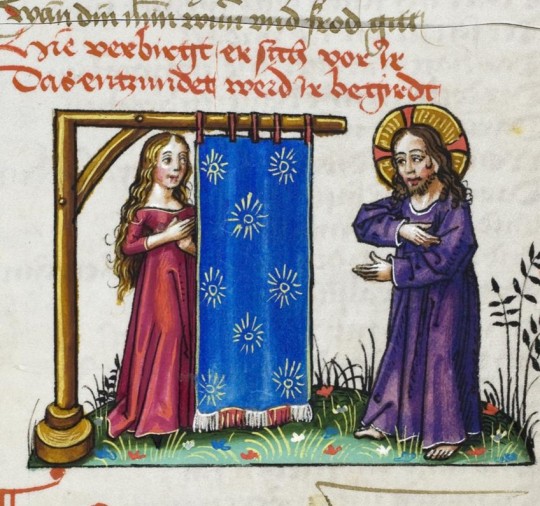
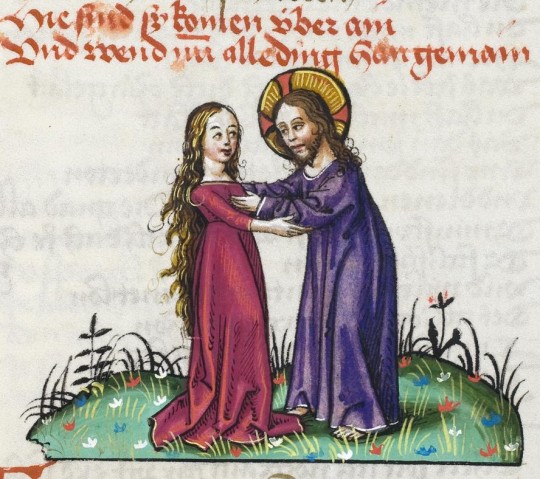
a mystical ship: christ and the soul as lovers
illustrations from a copy of 'christus und die minnende seele' ('christ and the loving soul'), konstanz, late 15th c.
source: Karlsruhe, Badische Landesbibl., Cod. Donaueschingen 106, fol. 26v, 29r, 19r, 24v, 34v
#15th century#mysticism#christus und die minnende seele#christ and the loving soul#unio mystica#lovers#souls#hearts#medieval art#illuminated manuscript#medieval studies
291 notes
·
View notes
Text

View of Toledo by El Greco
#el greco#art#toledo#landscape#spain#gothic#architecture#spanish#europe#european#fortress#castle#city#castle of san servando#symbolism#spanish renaissance#medieval#middle ages#cathedral#alcázar#mysticism
92 notes
·
View notes
Text
i need to do mushrooms with her
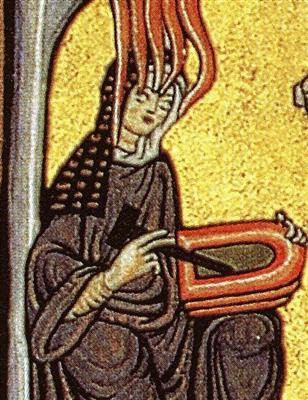
102 notes
·
View notes
Text





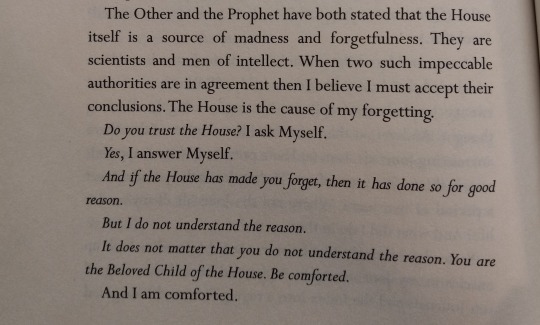

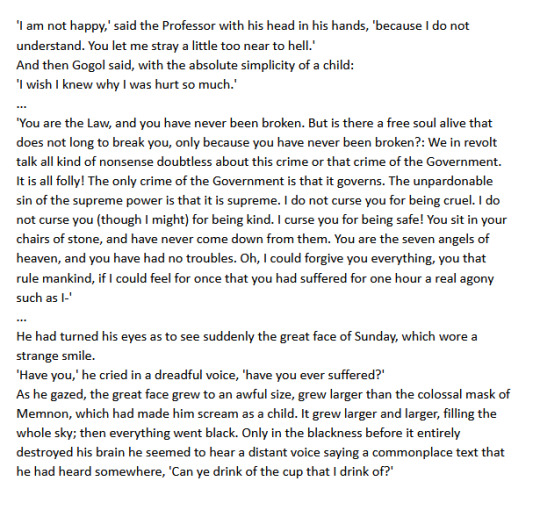









//
oppressive, burning, terrible Grace, or, on the divine Absence which is also divine Love
//
Casimir Pulaski Day - Sufjan Stevens // Graceless - The National // The Queen of Attolia - Megan Whalen Turner // The Sparrow Duology: Children of God - Mary Doria Russell // The Witness for the Dead & The Grief of Stones - Katherine Addison // Piranesi - Susanna Clarke // The Return of the Thief - Megan Whalen Turner // The Man Who Was Thursday: A Nightmare - GK Chesterton // The War of Vaslav Nijinksy - Frank Bidart // [x] - @ crawfish comic // post by @ intactics [deactivated] // This Hour and What is Dead - Li-Young Lee // Seven Swans -Sufjan Stevens // Hole Theory - Thomasin Francis // First Love/Late Spring - Mitski // [x] - @ slothu // Bad Blood - Bear's Den
#web weaving#faith tag#long post#uhhhh idk i want ppl to see this ive been cooking it in the back of my mind for ages but feel weird tagging it#uhhh??#christianity#i GUESS??#faith#god's silence#divine absence#i keep hesitating to post it thinking oh no im gonna think of smthn else to add to it IMMEDIATELY#and i KNOW I WILL. but i cant keep hedging my bets#ive been sitting on this since november#divine grace#divine love#where are the divine silence = divine grace = divine absence = divine love understanders#WHERE ARE THEY#maybe religious despair and religious fervour are adjacent flavours. to me#including mitski lyrics like. yes i am on my make everything about divine despair agenda. even romance. OOPS#medieval mystics who wrote abt god as a romantic lover and that despair and agony and longing. they knew what was up
91 notes
·
View notes
Text

St Hildegard von Bingen
oil on carved wood, 2019
9″ x 27″ x .75″ Alex Naszados
#catholic art#oil on carved wood#medieval#wood#hildegard of bingen#Abbess#benedictine#mystic#Alex Naszados#art
103 notes
·
View notes
Text
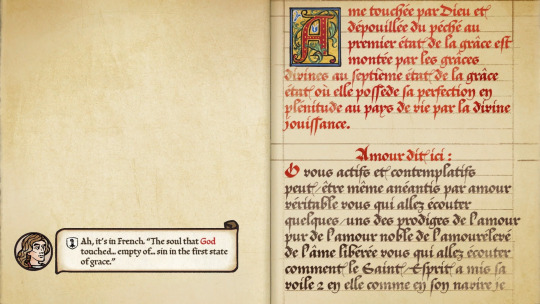

I'm sure someone has posted about this already, but I was curious about the book Sister Illuminata wanted to destroy. Long post under the cut.
The book is "The Mirror of Simple Souls" and it is a long poem written by Marguerite Porete around 1300. Porete was an educated woman associated with the beguine movement (a lay religious order), which allowed her more freedom to write and travel than most women of the time had.
The poem is a work of Christian mysticism and deals with "agape," or Divine love. It's unique in a couple of ways, not only because it was authored by a woman. It was in Old French at a time when Latin was the only approved language for religious texts, which was already a strike against her in later investigations. The book was also very popular - until, of course, it was condemned by the church. All existing copies were seized and burned, and circulation of the text was banned.
Marguerite Porete was arrested by inquisitors, likely around 1308 after she gave a copy of her book to a bishop. She was tried before William of Paris, the Inquisitor of France, where she staunchly refused to cooperate with any of the proceedings. She would not recant her views nor commit to stopping circulation of her work. She was burned at the stake for heresy in 1310.
I don’t understand it well, but from what I can wrap my tiny little brain around, the book essentially covers the way to unite one's soul with God, and includes characters like Love, Reason, and the Simple Soul. By giving up reason, she says, the soul can be filled with only Love and achieve oneness with God, transcending earthly troubles. She says a soul that is filled only with God's love has its sinful nature erased and therefore cannot sin - this is likely where the claims of heresy arose.
The text did survive the inquisition, though, and it was circulated anonymously until Porete was identified as the author in the 1940s. It is a foundational text for people studying Christian mysticism and the beguine movement.
(And if you wanted a translation of the above images, here is my own shoddy attempt:
"The soul touched by God and empty of sin in the first state of grace is ascended by the divine graces to the seventh state of grace, the state where it possesses its perfection in full in the land of living by divine enjoyment.
"Love says here:
"O, you active and contemplative, perhaps even annihilated by true love, you who will listen to those wonders of pure love, noble love, uplifted love of the liberated soul, you who are going to listen how the Holy Spirit has set his sails both in it [the soul] as in his ship. I beg of you out of love: listen, with great application, to this subtle understanding that is within you, and with great diligence. Otherwise, for lack of being so disposed, all those who hear this will misunderstand it. Now understand, with humility, a simple example borrowed from mundane love, and apply it equally to divine love.")
#pentiment#medieval history#the mirror of simple souls#marguerite porete#long post#christian mysticism#if anyone has more insight on the content of the text and the metaphysics I’d be interested!
341 notes
·
View notes
Text
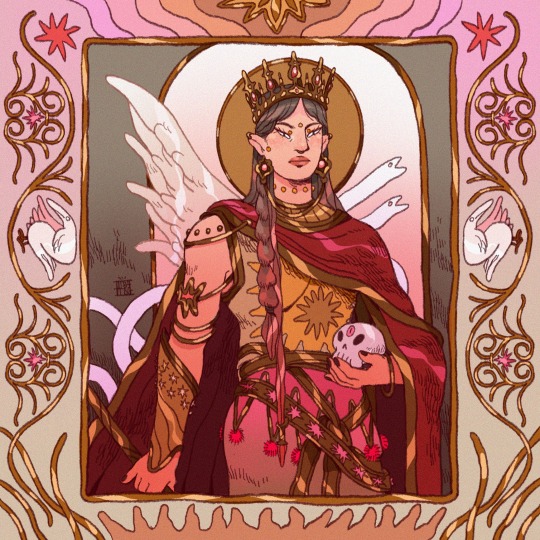
⚔️🌞❤️🔥 it was going to be a simple doodle…🥲 my patrons can confirm, they saw the sketch 🤡
#albabbgg#albabg#artists on tumblr#illustration#procreate#fantasy art#mystical art#mtg#dnd#medieval art#knight#skull#costume design#card art#tarot#patreon
160 notes
·
View notes
Photo

Zoe: Preacher, don't the Bible have some pretty specific things to say about killin'? Book: Quite specific. It is, however, somewhat fuzzier on the subject of kneecaps. -Firefly
Here we have the ever dashing @unicorn-shieldmaiden looking ready to take on any ghouls at this years Mystic Masquerade. Hosted by Loreamour.
Thank you again to all who were able to come out. I’m so excited for next years festivities including new additional events. 💚
Photo Credit: Emma Rockenbeck
#unicorn shieldmaiden#knight#dame#loreamour#knights of loreamour#mallet#hammer#medieval faire#renaissance faire#mystic masquerade#building a kingdom for the community
481 notes
·
View notes
Text
The Forgotten Legend of Unugai

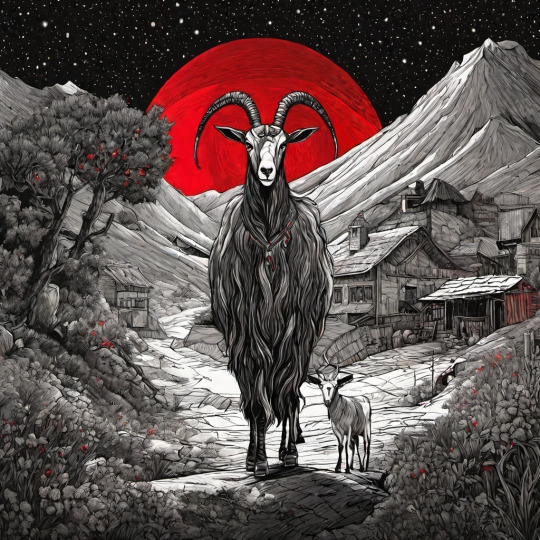
Post written by Anar Turangi
Imagine yourself as a traveller in ancient times, riding your horse through the hushed darkness of a graveyard. As expected, the cemetery lies still and empty in the late night hours. Suddenly, your attention is drawn to an unexpected sight—a stray goat perched by a gravestone.
While you were pondering, the goat has already made eye contact with you. You would like to look away, but something draws your gaze to the goat. In a bizarre twist, the goat rises onto its hind legs, its hooves rapidly growing in size, elevating it almost to human height. Without hesitation, the transformed goat rushes at you, lightning-fast covering the distance between you.
The roar of the frightened horse brought you out of your daze and you tried to run away from the demonic creature, but it was faster. With astonishing agility, the creature leaps onto your horse and clings onto you from behind. The horse immediately weakened under the influence of the new rider, and so did you. With each passing second you feel your strength leaving you, and your resistance is futile.
However, the first rays of sunlight glimmered on the horizon, and the creature's grip began to weaken quickly. The colossal goat swiftly dismounts the horse and vanishes from your sight in the blink of an eye.
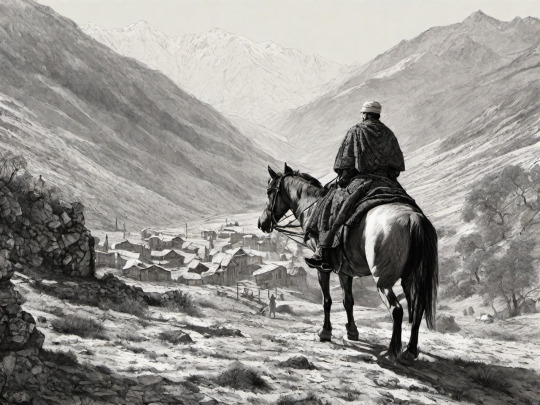

Once you come to your senses, you make your way to the nearest village, hoping to uncover an explanation for the harrowing encounter. You recount your story to the village elders, known as ağsaqqallar, who listen attentively.
After careful consideration, the elders identify the demonic creature that assaulted you last night as Unugai. The elders express sympathy for your plight, explaining that the limp you acquired from the incident will be joined by a speech impediment. The duration of these afflictions remains uncertain, leaving you with an unsettling sense of uncertainty.
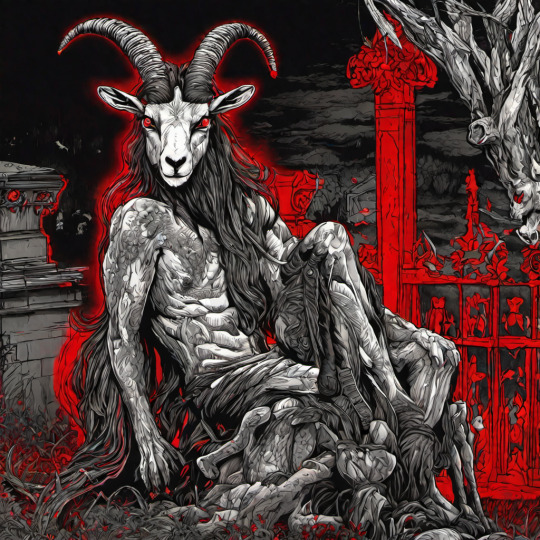


AI art concepts of Unugai
Unugai, also known as Unuqai in Azerbaijani folklore, is a captivating and enigmatic entity. Its original manifestation takes the form of a lone stray goat that seeks solace amidst the eerie stillness of moonlit cemeteries. In these sacred grounds, it lies in wait, patiently selecting its prey from the ranks of solitary travelers who dare to lock eyes with its otherworldly gaze.
With an unsettling intent, Unugai often seeks to ensnare its chosen victim in an eerie embrace, a chilling touch that inflicts torment and sends shivers down the spine. The aftermath of such a sinister encounter often leaves the unfortunate traveler plagued by sickness, an affliction that manifests as an unsettling limp and an unsettling stutter.
As tales of Unugai weave through the tapestry of legends, whispers of its vulnerabilities emerge. The creature is rumored to cower in fear at the sight of iron needles and pins, particularly when aimed at its most vulnerable points—the fragile junctures where a well-placed needle can pierce the neck or the lumbar vein.
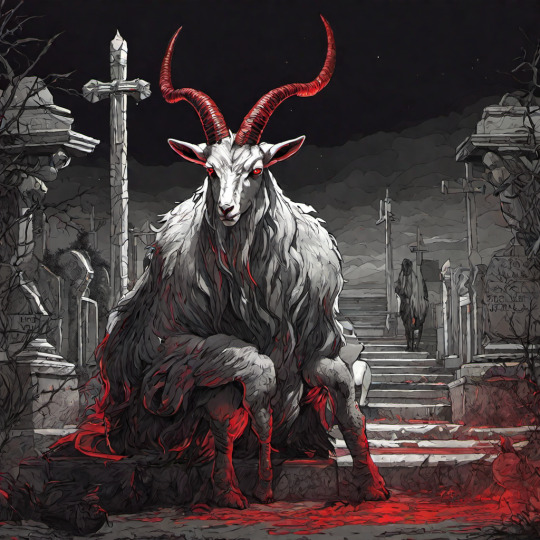
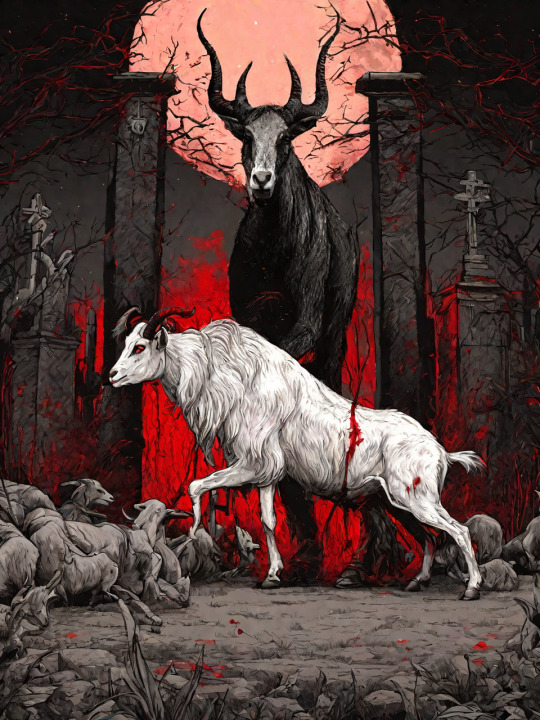
In more diabolical incarnations, Unugai preys upon pregnant women, luring them to the eerie embrace of the cemetery, where it snatches their unborn offspring for a gruesome feast.
The sunlit sanctuary Unugai retreats to during daylight remains an unsolved mystery. One can only speculate that it may visit its maternal figure, Al-Ana, a progenitor of various dark entities in Turkic myths.
Much like its mother, Unugai possesses the uncanny ability to ride a horse. However, this dread-inspiring talent casts a shadow of terror and suffering wherever it roams.
Mentions of Unugai were found mainly in the Sheki region of Azerbaijan, where tales of his ominous presence were once deeply rooted in local folklore. Yet, the passage of centuries, marked by the influence of Islamic beliefs, has nearly erased Unugai from the collective consciousness. Nowadays, the mere mention of cemeteries at night sends chills down the spines of children, who, in their fear, cry out not "Unugai!" but rather "jin," invoking the spirits of Islamic legend.
Intriguingly, archaeological discoveries in present-day Azerbaijan have unveiled enigmatic, smiling idols, thought to have been placed in cemeteries by the ancient tribes of Caucasian Albania. Their purpose remains shrouded in mystery, but a tantalizing connection emerges when exploring the legend of Unugai and its transformation into the genie narrative. It beckons us to consider that in bygone eras, similar legends may have pervaded these lands, and people, through the guardianship of idols, sought to shield their sacred resting places from malevolent forces.
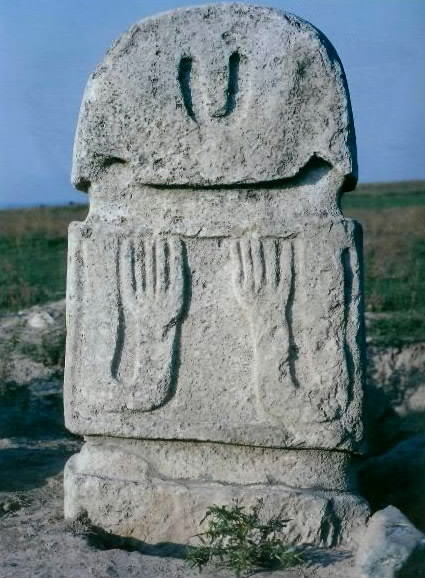
#Unugai#Unuqay#Azerbaijan#folklore#witcher#mythical creatures#art#history#mystical#pagan#medieval#antique#caucasus#легенда#легенды#мифы#мифология#кавказ#turkic#shaki#travelling#travel#tourism#kish#scp fandom#scp fanart#scp#spooktober
108 notes
·
View notes
Text

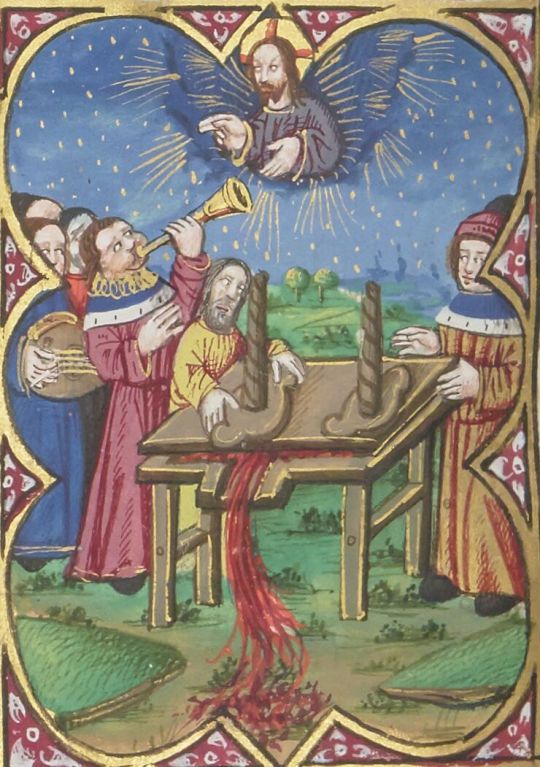
christ in the winepress
in the 'bible moralisée de philippe le hardi', france, 15th c.
source: Paris, BnF, Français 166, fol. 123v
(footnote for transparency/academic integrity: these miniatures do stand next to each other in the manuscript, but in reverse order, and i'm not entirely sure how they relate to each other and what or who is being pressed in the one i put in second place for humorous effect)
#if you speak french and can read medieval script maybe you can shed some light on this#15th century#christ in the winepress#mystical winepress#medieval art#bible moralisée de philippe le hardi
167 notes
·
View notes
Text
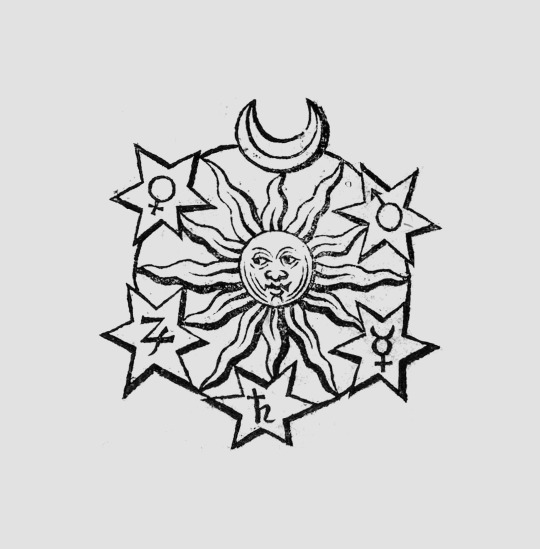
59 notes
·
View notes